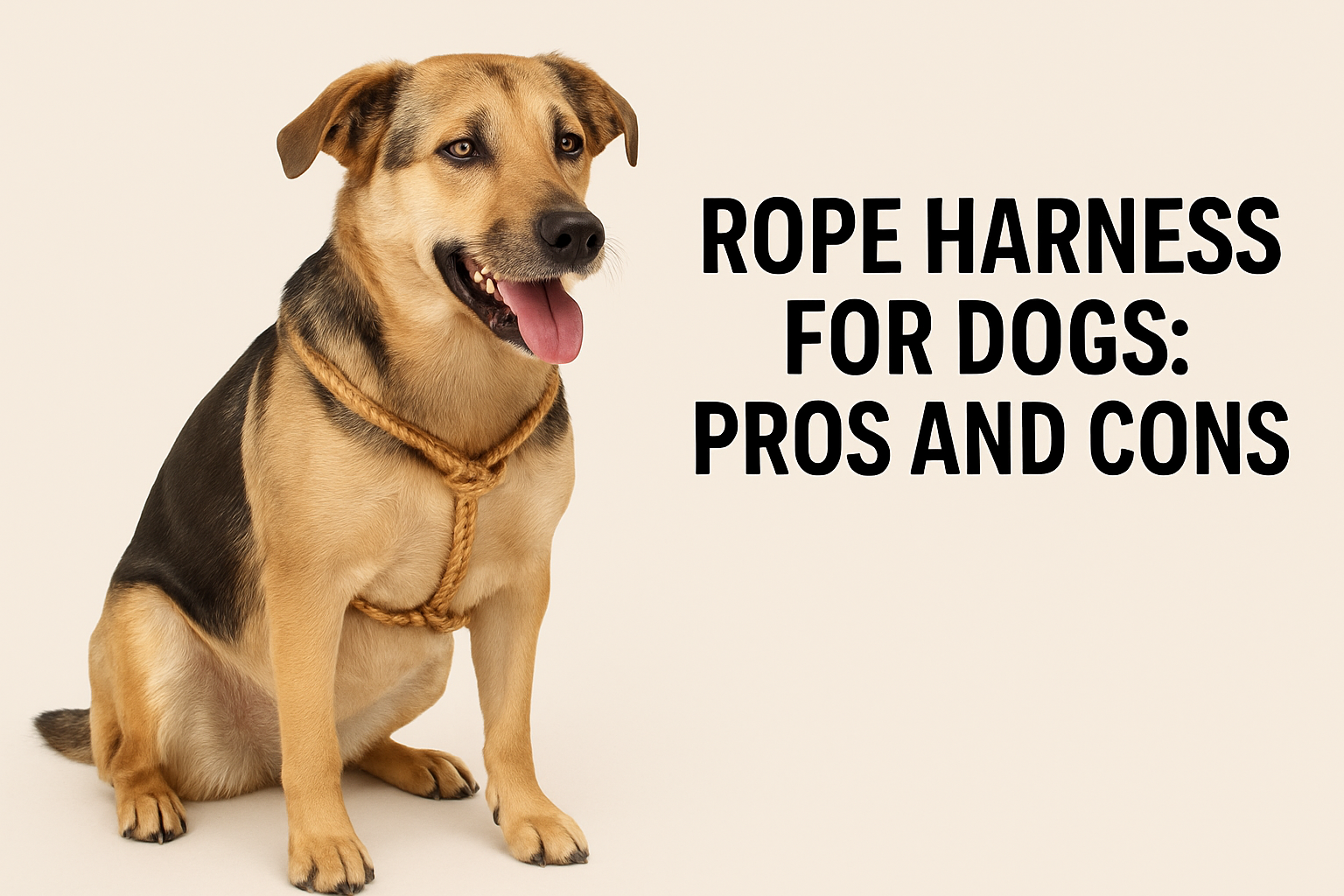When it comes to walking your dog, choosing the right harness is just as important as picking the right leash. Among the many types available, rope harnesses have gained popularity because of their simple design and lightweight feel. But are they really the best option for your furry friend? Let’s look at the pros and cons of rope harnesses for dogs so you can make an informed choice.
Pros of Rope Harnesses
1. Lightweight and Comfortable
Rope harnesses are usually made from soft, braided rope materials, which makes them very light. This can be especially beneficial for small or sensitive dogs who may feel restricted in heavier harnesses.
2. Easy to Adjust
Most rope harnesses have a slip-on or adjustable design, allowing you to fit them snugly around your dog’s body. This flexibility makes them suitable for dogs of different shapes and sizes.
3. Durable Material
High-quality rope harnesses are made with strong climbing-grade rope, which is tough enough to handle pulling and outdoor wear and tear. They can last longer than some fabric-based harnesses.
4. Minimalistic Design
Unlike bulky harnesses, rope harnesses are sleek and simple. Many dog owners prefer them for casual walks because they are less restrictive and don’t trap as much heat in warm weather.
5. Affordable and Accessible
Rope harnesses are often less expensive than padded or specialty harnesses, making them a budget-friendly option for everyday use.
Cons of Rope Harnesses
1. Limited Padding
Because of their simple construction, rope harnesses lack padding. This can cause discomfort or chafing if your dog pulls too hard, especially around sensitive areas like the chest or underarms.
2. Less Control for Strong Pullers
For large or strong dogs, rope harnesses may not provide enough control. Without padded support or special no-pull features, it can be harder to manage powerful pullers safely.
3. Potential for Rope Burn
If the rope material is rough, it can cause friction both on your dog’s fur and your hands. Cheaper versions may also fray over time, reducing comfort and durability.
4. Not Ideal for Long Walks or Training
While rope harnesses are fine for short walks, they’re not the best choice for long-distance hikes or leash training. Dogs that need extra behavioral support may benefit more from structured harnesses with no-pull or front-clip designs.
5. Limited Style Options
Compared to fabric or padded harnesses, rope harnesses come in fewer designs, colors, and patterns. For owners who like stylish gear, they may feel too plain.
Final Thoughts
Rope harnesses are a lightweight, durable, and budget-friendly option for casual walks, especially for small to medium-sized dogs who don’t pull much. However, if your dog is a strong puller, needs extra comfort, or you plan on long adventures, you may want to explore padded or no-pull harnesses instead.


